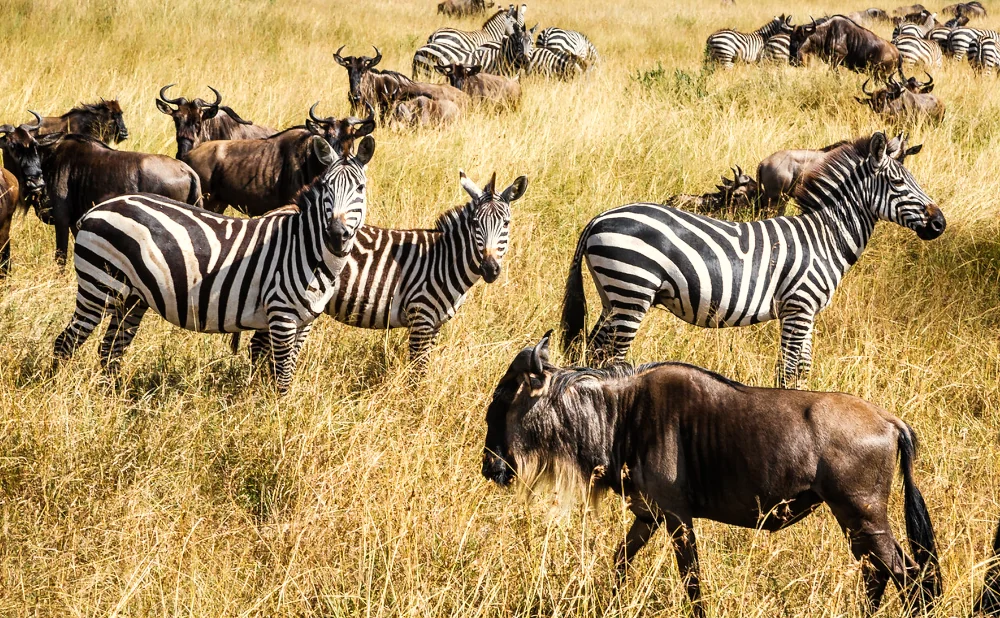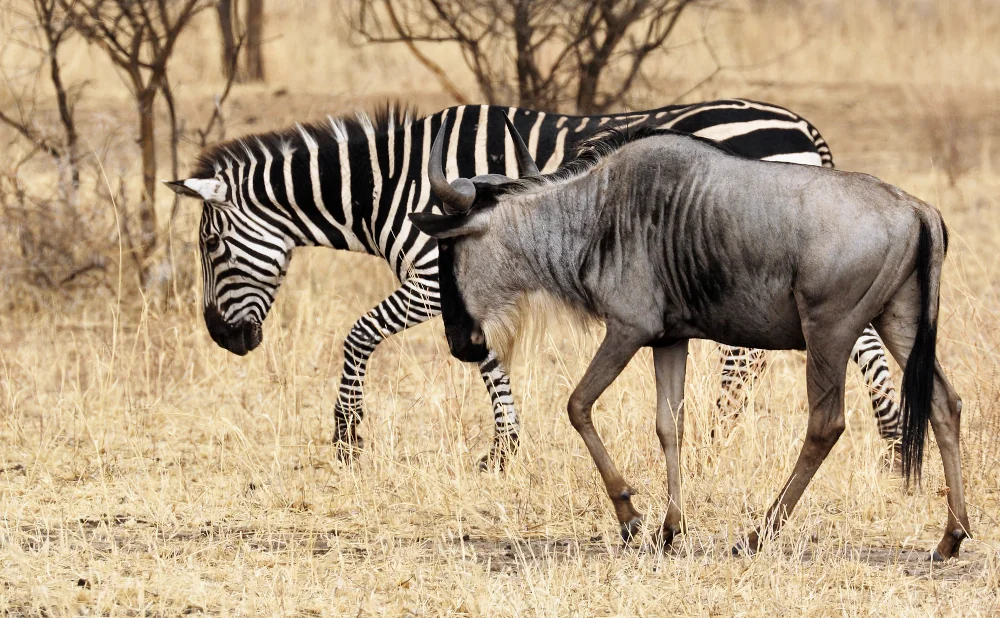The dynamic between predators and prey involving zebras and wildebeests is a fundamental aspect of the African savannah ecosystem. This intricate relationship shapes the behavior, migration patterns, and survival strategies of these herbivores, as well as the predators that rely on them for sustenance.
Primary Predators
The primary predators of zebras and wildebeests include:
1. Lions: As apex predators, lions are the most significant threat to both zebras and wildebeests. They hunt in prides and often target the young, old, or weak animals, but can also take down healthy adults using coordinated group hunting techniques.
2. Hyenas: Spotted hyenas are formidable hunters and scavengers. They often target young or injured animals and can hunt in packs, which allows them to take down larger prey.
3. Cheetahs: Known for their incredible speed, cheetahs typically hunt smaller or juvenile wildebeests and zebras. They rely on stealth and short bursts of speed to capture their prey.
4. Leopards: These solitary hunters usually target smaller or young prey and are known for their ability to ambush animals from trees or dense cover.
Crocodiles: During river crossings, particularly the Mara and Grumeti rivers, crocodiles pose a significant threat to migrating wildebeests and zebras, preying on them as they attempt to cross the water.
Prey Dynamics and Anti-Predator Strategies
Zebras and wildebeests have developed various strategies to avoid predation:
1. Herd Behavior: Both species travel in large herds, which provides safety in numbers. The presence of many individuals makes it harder for predators to single out one animal.
2. Vigilance: Constant vigilance is maintained within the herds. Zebras and wildebeests take turns keeping watch, using their keen senses of sight and hearing to detect predators early.
3. Alarm Calls: Zebras and wildebeests use vocalizations to warn each other of danger. Alarm calls alert the herd to the presence of predators, prompting them to flee or prepare for defense.
4. Flight Response: Both species are capable of rapid, sustained running. When a predator is detected, the herd often runs in a coordinated manner, making it difficult for the predator to catch any individual.
5. Protective Grouping: During calving season, zebras and wildebeests often group together to protect their young. Mothers can be particularly aggressive in defending their offspring against predators.
Migration and Predation
The Great Migration is a pivotal event in the predator-prey dynamics of zebras and wildebeests:
1. Seasonal Abundance: The migration creates a seasonal abundance of prey for predators. As the herds move, they attract lions, hyenas, cheetahs, and other predators, which follow the migration route to capitalize on the available food.
2. River Crossings: The perilous river crossings during the migration, such as the Mara and Grumeti rivers, are key moments for predation. Crocodiles lie in wait for the herds to cross, leading to dramatic and often deadly encounters.
3. Predator Density: Predators tend to congregate in areas where the migrating herds are most dense, leading to increased predation pressure during certain times of the year. This results in high predation rates, particularly on the young, weak, or injured individuals.
Ecological Impact
The predator-prey dynamics between zebras, wildebeests, and their predators have significant ecological impacts:
1. Population Control: Predation helps regulate the populations of zebras and wildebeests, preventing overgrazing and ensuring that the grasslands remain healthy and sustainable.
2. Natural Selection: Predation pressure drives natural selection, favoring traits that enhance survival, such as speed, vigilance, and effective group behavior.
3. Nutrient Cycling: Predators contribute to nutrient cycling by breaking down carcasses, which helps return essential nutrients to the soil, supporting plant growth and maintaining the health of the ecosystem.
Coevolution and Adaptations
The predator-prey relationship has led to several adaptations in both zebras, wildebeests, and their predators:
1. Zebras: Zebras have developed strong, muscular bodies and sharp hooves for defense. Their distinctive black and white stripes may also serve to confuse predators by creating a "dazzle" effect when they move in groups.
2. Wildebeests: Wildebeests are highly efficient runners, capable of sustained high speeds. Their herd behavior and synchronized calving are crucial adaptations for survival.
3. Predators: Lions, hyenas, cheetahs, and other predators have evolved various hunting strategies, such as stalking, ambushing, and pack hunting, to effectively capture their prey.
The dynamics between predators and prey, particularly involving zebras and wildebeests, are central to the functioning of the African savannah ecosystem. These interactions drive behavioral adaptations, influence migration patterns, and maintain ecological balance. Understanding these relationships is crucial for conservation efforts aimed at preserving the delicate balance of these iconic landscapes and ensuring the continued survival of both prey and predator species.










